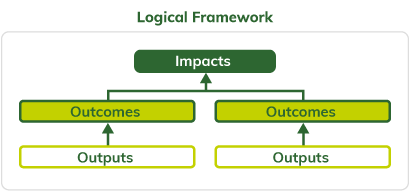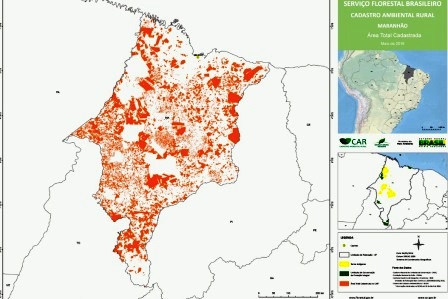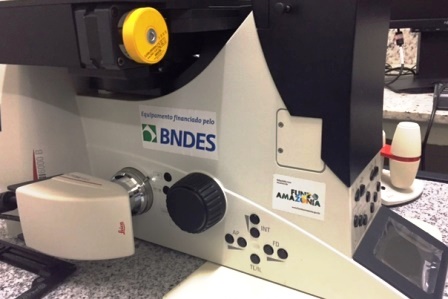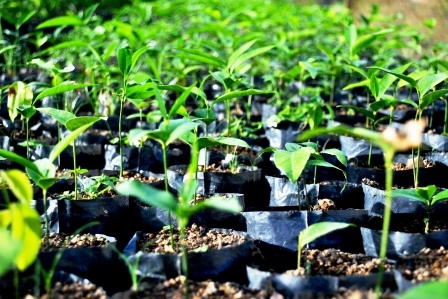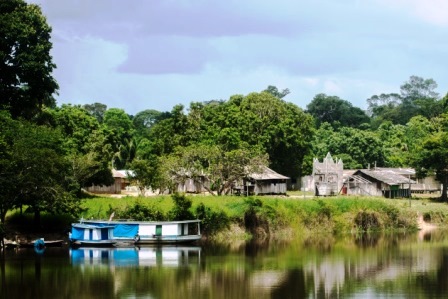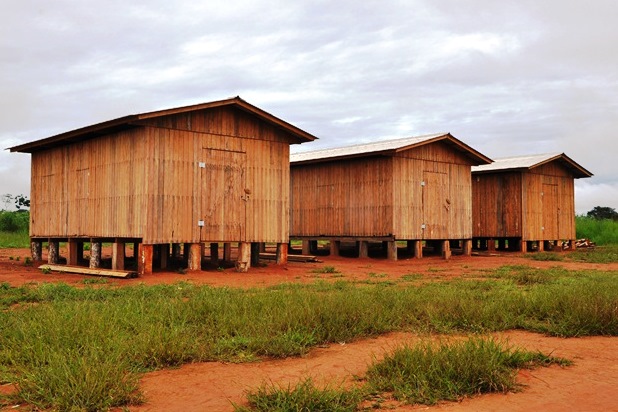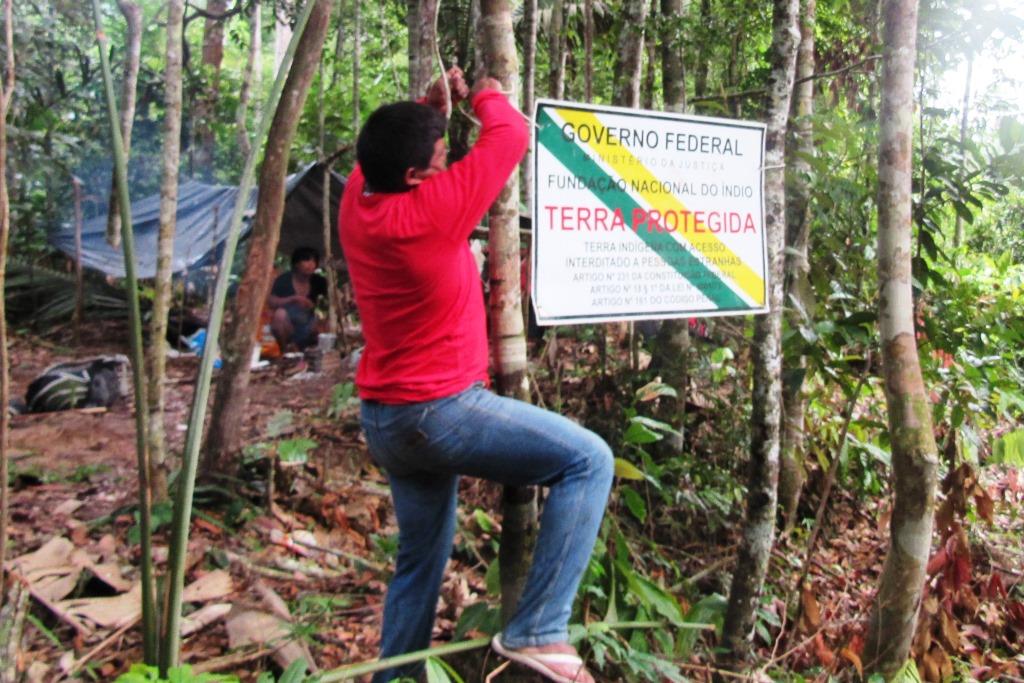Result and impact indicators
The project activities contributed to the results related to the “Territorial Planning” component (3) of the Amazon Fund Logical Framework.
Direct effect 3.1 – “Improved management of federal and state protected areas (PA) in the state of Amapá.”
The main indicators used to monitor this objective were:
- Number of individuals trained in activities related to the management of public forests and protected areas – environmental agent courses – specified by gender (output indicator)
Target: 150 | Final Result: 123 (82.0% of the target – 36 women and 87 men)
- Number of individuals trained in activities related to the management of public forests and protected areas – master courses – specified by gender (output indicator)
Target: 50 | Final Result: 38 (76% of the target – 15 women and 23 men)
- Number of individuals trained in activities related to the management of public forests and protected areas effectively using the knowledge acquired – environmental agent courses and master courses – specified by gender (outcome indicator)
Target: 200 | Final Result: 161 (80.5% of the target – 51 women and 110 men)
The training goals were set as a parameter for the expected results and were important in the project planning process. Although the classes were composed through public selection processes, there were requirements imposed on the training candidates in the public notices and the percentage goals achieved between 75% and 80% can be considered satisfactory.
- Extent of protected areas with strengthened environmental management and/or with the control of their strengthened territory
Target: 18.7 million ha | Final result: 8.9 million ha (48% of the target)
Regarding the territorial coverage of the PAs to which the students selected for the training actions should be linked, the goal was below expectations. This is explained by the demands of the public selection, in which it was not possible to ensure that all state PAs had representatives.
The following table shows the evolution of deforestation in the last seven years in the areas affected by the project. It is observed that Amapá, in comparison with other states of the Brazilian Amazon, has the lowest deforestation rates, which is explained, in part, by the relevant area of PAs in relation to the total area of the territory.
| |
2014
|
2015
|
2016
|
2017
|
2018
|
2019
|
2020
|
|
Deforestation in Federal and State CUs in Amapá
|
6.62
|
4.85
|
3.07
|
5.25
|
7.33
|
7.45
|
3.43
|
Source: http://www.dpi.inpe.br/prodesdigital/prodesuc.php
The average deforestation verified in federal and state PAs in the state of Amapá was approximately 5.2 km²/year, in the period between 2015 and 2020, compared to the project’s baseline of 6.6 km²/year in 2014. The constant improvement of this indicator depends on the continuity of projects aimed at the protection and sustainable use of the forest, combined with the permanent involvement of the communities and local representative entities.
Institutional and administrative aspects
Throughout the execution of the project, Ecam was able to attract and mobilize several partners in addition to those previously mentioned, highlighting the International Federation of Park Keepers (FIG), the Brazilian Association of Park Keepers (ABG), the Institute of Scientific and Ecological Research of Amapá (Iepa), the World Wildlife Fund (WWF), and Unifap, which issued certificates to students who completed the courses taught by the project.
The broad programmatic content of the courses favored the articulation of these partnerships and represented an opportunity to build contact and knowledge networks for the participants.
Regarding the administrative aspects, the investments of the project in the items associated with communication deserve to be highlighted, allowing Ecam to carry out distance learning modules provided for in the master courses for managers.
Risks and lessons learned
The project was executed in a phased manner in six courses, which allowed Ecam to make adjustments to enhance the expected results. When forming the first classes, for example, it was identified that the participation of women in response to the public notices was low. This fact ended up being the subject of a specific debate module in the third class, which was asked to disclose the public notice to the female public of their localities after returning to their communities. This action resulted in a significant increase in the participation of women in subsequent classes.
Another lesson learned for future projects concerns territorial coverage. It is desirable to think about selection rules that contemplate the participation and goal of qualified agents for all PAs in the state. This could be done by adapting the public notices that consider the particularities of each region surrounding the protected areas and also by mapping potential candidates, adjusting the requirements and contents to be addressed in the courses.
Sustainability of results
The courses made it possible to renew and strengthen the network of park rangers in the state of Amapá, which represents an important gain in PA conservation. It should be noted that the group supported by the project integrated a network of approximately 450 park rangers trained in the state of Amapá throughout previous editions of the Training to Conserve project.
After the training, the participants acted in several voluntary actions in several municipalities of the state, which confirmed the recognition of their role as environmental agents in the region, in addition to operating in the region as park rangers, for example, in the Arinaldo Gomes Barreto Amazon Biopark, in Macapá.
Finally, it is worth highlighting the indirect effects of the project and the incorporation of its contents in regional public policy initiatives, such as: (i) adopting the curriculum developed by the project as one of the hiring criteria for new PAs Brigade members by ICMBio; (ii) using the knowledge acquired in actions to generate income combined with awareness about biodiversity conservation, of which the structuring of an ecotourism business model in the municipality of Serra do Navio (AP) by a trained student in the project is an example; and (iii) the institutional strengthening of the Association of Park Keepers of Amapá (AGPA), which had relevant participation from project students in preparing the institutional video from the training in the audiovisual workshops that integrated the content of the courses¹.
¹ Available at: https://www.youtube.com/watch?v=oWy1ZcJ18Mk.


